Wing Chun Forms
Forms of Wing Chun include three empty hand forms, two weapons forms and the wooden dummy form. Along with these forms is an important practice called Chi Sau (Sticking Hands) that is crucial to developing the natural fighting reflexes of the body & mind.
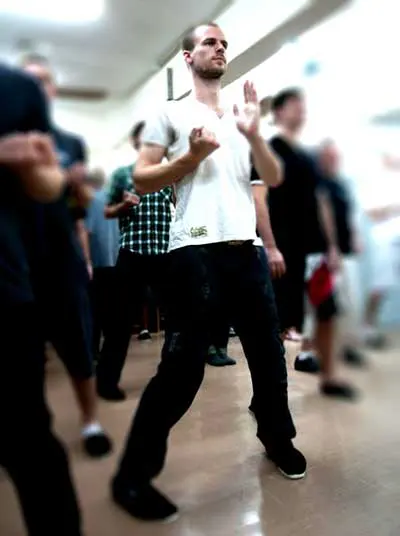
Siu Nim Tao Guarding Hand (Woo Sau)
Siu Nim Tao (Little Idea)
Siu Nim Tao (Little Idea) is the first form of Wing Chun. As its name suggests it aims at developing the student’s subconscious idea power. It achieves this through deep relaxation and applied intent when practicing the form. The movements themselves are based on straight lines and circular rotations. Since the practitioner remains stationary, the form develops the student’s stance, mind and body weight focus towards the centreline, subconscious idea power and body awareness.
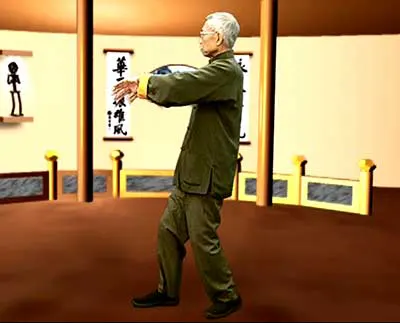
Chum Kiu Double Wing Arc Hands (Siong Bong Sau)
Chum Kiu (Detecting Hand-Bridge)
The second Wing Chun form introduces movement of the body trunk with stepping and pivoting. It combines the shapes of Siu Nim Tao with stepping and pivoting and aims at developing the student’s ability to use their body mass effectively.
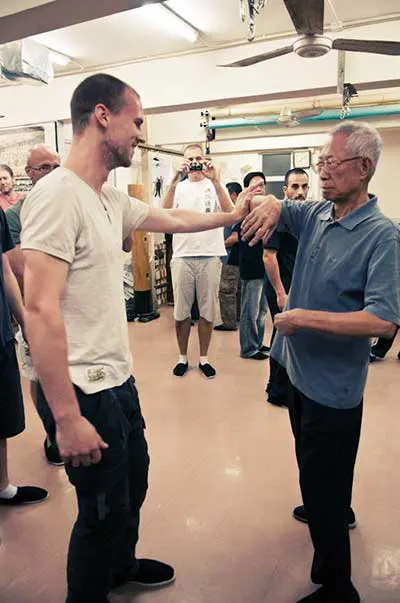
Biu Jee Kneeing Elbow (Jau Ham)
Biu Jee (Darting Fingers)
Biu Jee combines skills from Siu Nim Tao and Chum Kiu, introducing acceleration and multi-directional forces. Biu Jee transfers the centre of weight of the body to the fingertips to produce a highly destructive force. The movements are natural and rotate the joints in a more natural way.
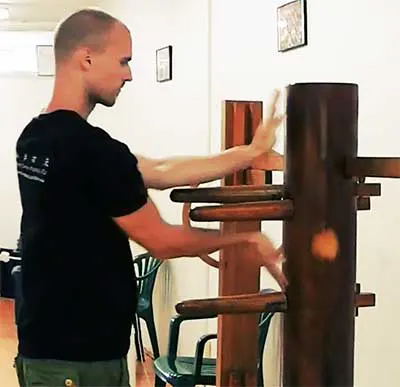
Mook Yan Jong Double Palm Strike
Mook Yan Jong (Wooden Dummy)
Mook Jong combines movements from all the three empty hand forms and allows the student to practice delivering full power into the dummy. It gives the student the ability to develop a feeling for developing powerful strikes using the body weight from different positions.
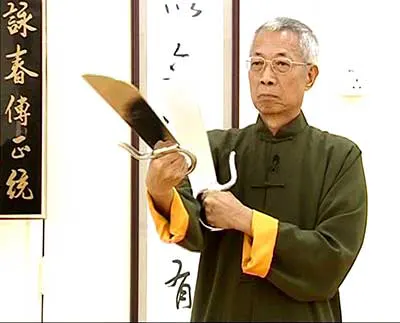
Bart Jam Do
Bart Jam Do (Eight Chopping Knives)
As the first weapons form in Wing Chun, Bart Jam Do expands further on the idea of transferring the body weight out of the hands and into the knives. The movements aim at further developing correct movement rather than being fighting techniques.
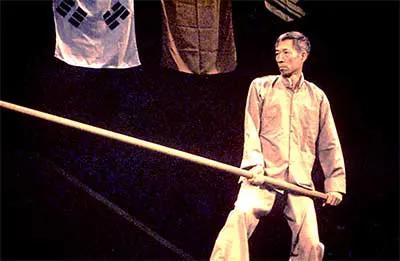
Luk Dim Boon Kwan
Luk Dim Boon Kwan ( Six Point Five Pole)
This final form uses a 9 foot pole that extends out from the centre of the body weight. It is a simple form which has six and a half moves. Combining skills from all previous forms, it develops the student’s ability to transfer their body weight through into pole for effective use.

Chi Sau training
Chi Sau (Sticking Hands)
Chi Sau is a fun training exercise that helps a student develop the automatic fighting reflexes for realistic self-defence. It is essential in developing the feeling and sensitivity for using body mass to control the opponents balance and arms automatically without using muscular strength. Chi Sau is a cooperative exercise and covers the application side of Wing Chun in a complete way. As a result of practicing Chi Sau in combination with Mook Jong, a student will develop realistic fighting skills.